 Search by Keyword
Sign Up Below for our MONTHLY BEATLES TRIVIA QUIZ!
|
 "Eight Days A Week" US picture sleeve
|
"EIGHT DAYS A WEEK"
(John Lennon - Paul McCartney)
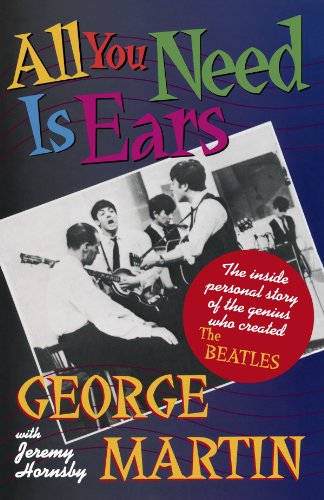 To say that John Lennon and Paul McCartney were naturals at writing classic pop hits is probably the understatement of all time. "What is certain is that their songs were great," producer George Martin stated in his book "All You Need Is Ears." He continues, "Starting with 'Please Please Me' we had twelve successive number ones. It was a unique achievement...It became almost an accepted fact of nature. The question was not whether a record would get to number one, but how quickly." To say that John Lennon and Paul McCartney were naturals at writing classic pop hits is probably the understatement of all time. "What is certain is that their songs were great," producer George Martin stated in his book "All You Need Is Ears." He continues, "Starting with 'Please Please Me' we had twelve successive number ones. It was a unique achievement...It became almost an accepted fact of nature. The question was not whether a record would get to number one, but how quickly."
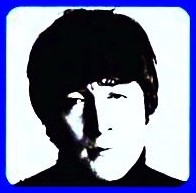 Everyone was confident that they would come up with another huge smash to follow their current British number one single "A Hard Day's Night." Everyone, that is, except The Beatles themselves. "There was a lousy period when we didn't seem to have any material for the LP and didn't have a single," John remarked concerning the latter half of 1964. With their hectic touring schedule during these months, and a deadline of having all of these songs written and recorded for release before the year was over, the pressure was on. Everyone was confident that they would come up with another huge smash to follow their current British number one single "A Hard Day's Night." Everyone, that is, except The Beatles themselves. "There was a lousy period when we didn't seem to have any material for the LP and didn't have a single," John remarked concerning the latter half of 1964. With their hectic touring schedule during these months, and a deadline of having all of these songs written and recorded for release before the year was over, the pressure was on.
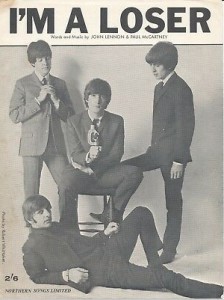 At first they thought Lennon's autobiographical "I'm A Loser" could be the next single, but then they recorded "No Reply," which they thought might work better. While both of these songs are great songs in themselves, neither of them had the commercial appeal of the caliber of "I Want To Hold Your Hand" or "Can't Buy Me Love." Then came the undeniable charm of "Eight Days A Week," which appeared to have all the necessary ingredients to be their next number one hit. This song was then earmarked as the next single. At first they thought Lennon's autobiographical "I'm A Loser" could be the next single, but then they recorded "No Reply," which they thought might work better. While both of these songs are great songs in themselves, neither of them had the commercial appeal of the caliber of "I Want To Hold Your Hand" or "Can't Buy Me Love." Then came the undeniable charm of "Eight Days A Week," which appeared to have all the necessary ingredients to be their next number one hit. This song was then earmarked as the next single.
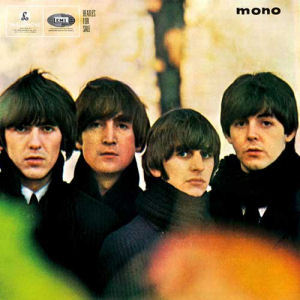 But this was not to be. When The Beatles recorded "I Feel Fine" on October 18th, 1964, they felt this was an even better fit. "Eight Days A Week" was then relegated to becoming an album track on their fourth British LP "Beatles For Sale." But this was not to be. When The Beatles recorded "I Feel Fine" on October 18th, 1964, they felt this was an even better fit. "Eight Days A Week" was then relegated to becoming an album track on their fourth British LP "Beatles For Sale."
Fortunately, you can't keep a commercially irresistible song down! Capitol Records in the US knew a #1 song when they heard one. They enacted a new practice of spotting a song on any new album they received that they felt would be a hit, and intentionally hold off releasing it for awhile. Then, under the guise of the song being "brand new," they would release it as a single in America. Their recent policy of releasing singles that were already on American albums wasn't as profitable, as evidenced by the respecitive commercial performances of "I'll Cry Instead" and "Matchbox."
 This new practice worked perfectly, as "Eight Days A Week" raced to the #1 spot on the Billboard Hot 100 to keep American Beatles fans happy until "Ticket To Ride" was released shortly afterward. The ruse worked so well that they repeated it twice again in the future. Capitol had become even more business-savvy. This new practice worked perfectly, as "Eight Days A Week" raced to the #1 spot on the Billboard Hot 100 to keep American Beatles fans happy until "Ticket To Ride" was released shortly afterward. The ruse worked so well that they repeated it twice again in the future. Capitol had become even more business-savvy.
Songwriting History
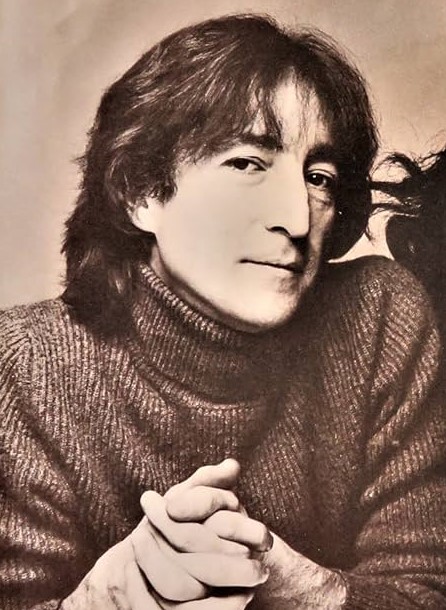 As successful as a song may be, there is no guarantee that its authors feel the same way. "'Eight Days A Week' was never a good song," Lennon stated in 1980. "We struggled to record it and struggled to make it into a song. It was (Paul's) original effort, but I think we both worked on it. But it was lousy anyway." John felt that way even back in 1965: "'Help!' as a film was like 'Eight Days A Week' as a record for us. A lot of people liked the film, and a lot of people liked that record. But neither was what we really wanted - we knew they weren't really us...Close friends know that the picture and 'Eight Days' weren't our best. They were both a bit manufactured." In his book "The Lyrics," Paul writes: "I don't think either of us every thought it was a great song, but it was a cool idea." As successful as a song may be, there is no guarantee that its authors feel the same way. "'Eight Days A Week' was never a good song," Lennon stated in 1980. "We struggled to record it and struggled to make it into a song. It was (Paul's) original effort, but I think we both worked on it. But it was lousy anyway." John felt that way even back in 1965: "'Help!' as a film was like 'Eight Days A Week' as a record for us. A lot of people liked the film, and a lot of people liked that record. But neither was what we really wanted - we knew they weren't really us...Close friends know that the picture and 'Eight Days' weren't our best. They were both a bit manufactured." In his book "The Lyrics," Paul writes: "I don't think either of us every thought it was a great song, but it was a cool idea."
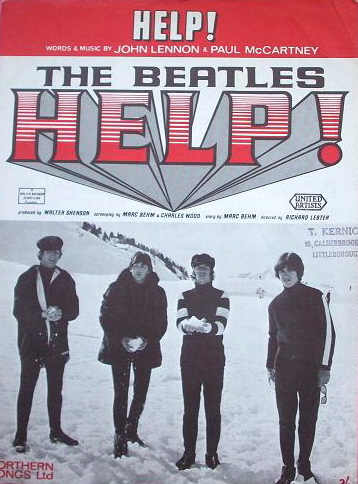 Many writers make a connection between this song and one of the working titles for their second movie. This long-held understanding could be based on the following quote from John in 1972: "I think we wrote ("Eight Days A Week") when we were trying to write the title song for 'Help!' because there was at one time the thought of calling the film 'Eight Arms To Hold You.'" Many writers make a connection between this song and one of the working titles for their second movie. This long-held understanding could be based on the following quote from John in 1972: "I think we wrote ("Eight Days A Week") when we were trying to write the title song for 'Help!' because there was at one time the thought of calling the film 'Eight Arms To Hold You.'"
While there may be some connection between the song and coming up with an idea for the title of their second movie, later interviews with McCartney reveal that the inspiration for the song came from a different source. "I showed up at John's house one day," Paul relates. "I had driven out from London and, because I had lost my licence because of a speeding offence, I was being driven out there and we were pulling up in John's drive and I was talking to the driver and asked him, 'What kind of a week have you had? Have you been working hard?' He then said to me, 'I've been working eight days a week, Paul!' After hearing that, I literally fell into John's place, thinking, 'That's good!'"
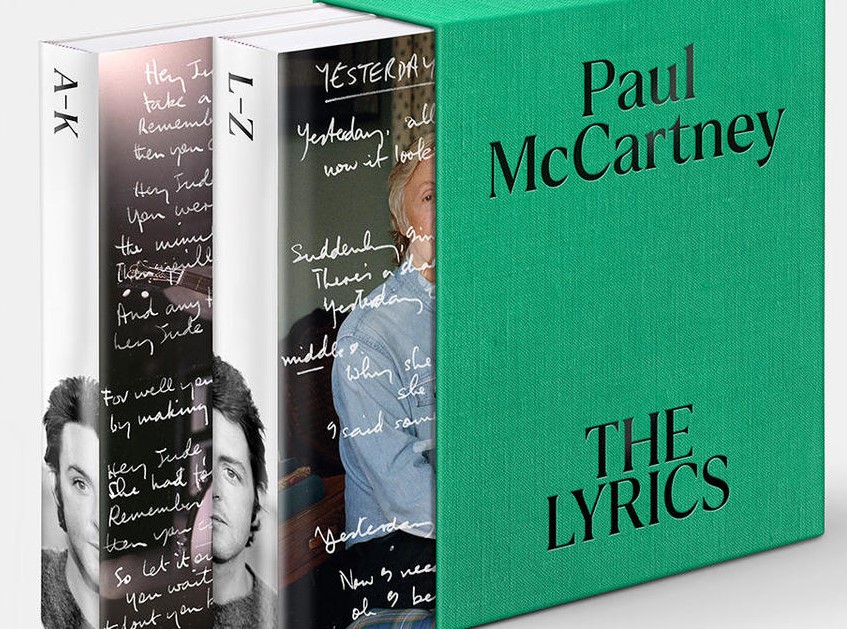 In his book "Many Years From Now," McCartney adds, "Neither of us had heard that expression before so we had that chauffeur to credit for that. It was like a little blessing from the gods. I didn't have any idea for it other than the title, and we just knocked it off together, just filling in from the title. So that one came quickly." In his book "The Lyrics," Paul elaborated further. "A lot of what we had going for us was that we were both good at noticing the stuff that just pops us, and grabbing it. And the other thing is that John and I had each other. If he was sort of stuck for a line, I could finish it. If I was stuck for somewhere to go, he could make a suggestion. We could suggest the way out of the maze to each other, which was a very handy thing to have. We inspired each other. So when I arrived with the title, he was just happy that we had a starting point." In his book "Many Years From Now," McCartney adds, "Neither of us had heard that expression before so we had that chauffeur to credit for that. It was like a little blessing from the gods. I didn't have any idea for it other than the title, and we just knocked it off together, just filling in from the title. So that one came quickly." In his book "The Lyrics," Paul elaborated further. "A lot of what we had going for us was that we were both good at noticing the stuff that just pops us, and grabbing it. And the other thing is that John and I had each other. If he was sort of stuck for a line, I could finish it. If I was stuck for somewhere to go, he could make a suggestion. We could suggest the way out of the maze to each other, which was a very handy thing to have. We inspired each other. So when I arrived with the title, he was just happy that we had a starting point."
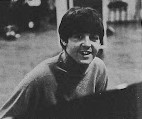 Upon examination of the lyrics, it's quite clear that the whole song was written around the title they discovered. Paul concurs: "John and I were always looking for titles. Once you've got a good title, if someone says, 'What's your new song?' and you have a title that interests people, you are halfway there. Of course, the song has to be good. If you've called it 'I Am On My Way To A Party With You, Babe,' they might say, 'OK...' But if you've called it 'Eight Days A Week,' they say, 'Oh yes, that's good!'" Upon examination of the lyrics, it's quite clear that the whole song was written around the title they discovered. Paul concurs: "John and I were always looking for titles. Once you've got a good title, if someone says, 'What's your new song?' and you have a title that interests people, you are halfway there. Of course, the song has to be good. If you've called it 'I Am On My Way To A Party With You, Babe,' they might say, 'OK...' But if you've called it 'Eight Days A Week,' they say, 'Oh yes, that's good!'"
 Then remembering it - that was the trick," Paul continues in his book "The Lyrics." "And in order to remember it, we had to write something memorable. You know, if we were writing something that was too clever or too this or that, we probably weren't going to remember it. I always found that by the time I'd got home in the evening and had a drink, I'd completely forgotten it. 'Oh sh*t,' I would think. 'Well, he'll remember it. But what if he's also had a drink and we've both forgotten it?' But in the morning, I'd wake up singing it. It would be there, fresh as a daisy. So we had the lyrics for 'Eight Days A Week,' and now I'd reinforced them in my brain, and by the time we came to the session, John and I could play it on acoustic guitars for George, Ringo, George Martin, and the engineer...within twenty minutes we'd all learnt it." Then remembering it - that was the trick," Paul continues in his book "The Lyrics." "And in order to remember it, we had to write something memorable. You know, if we were writing something that was too clever or too this or that, we probably weren't going to remember it. I always found that by the time I'd got home in the evening and had a drink, I'd completely forgotten it. 'Oh sh*t,' I would think. 'Well, he'll remember it. But what if he's also had a drink and we've both forgotten it?' But in the morning, I'd wake up singing it. It would be there, fresh as a daisy. So we had the lyrics for 'Eight Days A Week,' and now I'd reinforced them in my brain, and by the time we came to the session, John and I could play it on acoustic guitars for George, Ringo, George Martin, and the engineer...within twenty minutes we'd all learnt it."
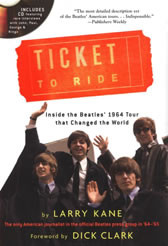 As for the time of writing, journalist Larry Kane gives us a bit of a hint in his book "Ticket To Ride" via his recollection of an airline flight with The Beatles during their first extensive US tour. "On a flight from Dallas to New York, I managed to overhear a bit of musical history. As three of The Beatles worked on guitar, Ringo tapped his knees and all four sang as they tested the tune for a song that would later become 'Eight Days A Week.' On the plane, they were just humming the song and jamming with each other...When I've heard it over the years, I've always been reminded of that moment. As for the time of writing, journalist Larry Kane gives us a bit of a hint in his book "Ticket To Ride" via his recollection of an airline flight with The Beatles during their first extensive US tour. "On a flight from Dallas to New York, I managed to overhear a bit of musical history. As three of The Beatles worked on guitar, Ringo tapped his knees and all four sang as they tested the tune for a song that would later become 'Eight Days A Week.' On the plane, they were just humming the song and jamming with each other...When I've heard it over the years, I've always been reminded of that moment.
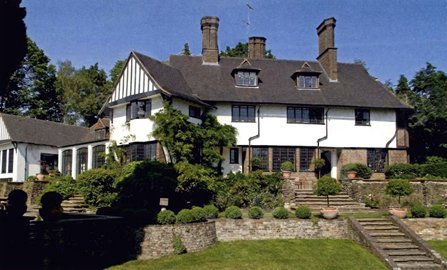 This quote from Larry Kane establishes that the song had already been written by September 19th, 1964 when that flight took place. And since we know that the song was written at Lennon's Kenwood home just before the tour began, but probably didn't exist at the time of their August 14th, 1964 recording session at EMI, the time of writing falls between August 15th and 18th, 1964. This quote from Larry Kane establishes that the song had already been written by September 19th, 1964 when that flight took place. And since we know that the song was written at Lennon's Kenwood home just before the tour began, but probably didn't exist at the time of their August 14th, 1964 recording session at EMI, the time of writing falls between August 15th and 18th, 1964.
Recording History
 The Beatles entered EMI Studio Two on October 6th, 1964, the fifth session for their British album "Beatles For Sale," at 3:00 pm. Their only order of business this day was to record their recently written composition "Eight Days A Week." The only problem was that they were very unsure about the arrangement they would use. They took the seven-hour recording session on that day (with one 15 minute break) to experiment with the arrangement as they went along, something they would do with increasing regularily as their career progressed. The Beatles entered EMI Studio Two on October 6th, 1964, the fifth session for their British album "Beatles For Sale," at 3:00 pm. Their only order of business this day was to record their recently written composition "Eight Days A Week." The only problem was that they were very unsure about the arrangement they would use. They took the seven-hour recording session on that day (with one 15 minute break) to experiment with the arrangement as they went along, something they would do with increasing regularily as their career progressed.
 It took the first six takes to come up with a suitable introduction for the song. "Take one" started off with just John on acoustic guitar, "take two" comprised John and Paul performing harmonized "oohs" before the guitar came in, "take three" (as heard on "Anthology 1") combines both these ideas simultaneously and "take four" shows both John and Paul singing one note on the same pitch as the acoustic guitar changes chords. "Take five," as also heard on "Anthology 1," not only has them keeping the same pitch at the beginning but also at the end of the song. It took the first six takes to come up with a suitable introduction for the song. "Take one" started off with just John on acoustic guitar, "take two" comprised John and Paul performing harmonized "oohs" before the guitar came in, "take three" (as heard on "Anthology 1") combines both these ideas simultaneously and "take four" shows both John and Paul singing one note on the same pitch as the acoustic guitar changes chords. "Take five," as also heard on "Anthology 1," not only has them keeping the same pitch at the beginning but also at the end of the song.
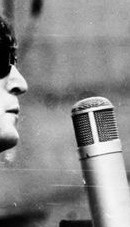 "Take six" ended up being the keeper, which ditched the "oohs" in the introduction altogether. They instead began the song instrumentally with George Harrison's electric guitar in the forefront, although it came across a little ragged. The close of the song was also somewhat abrupt, but they went with it for the time being. Takes seven through thirteen concentrated on multiple overdubs, such as double-tracking Lennon's lead vocals and adding the distinctive handclaps heard throughout the song. At 6:45 pm, the session was complete, but more thought ensued about the song's arrangement within the next twelve days. "Take six" ended up being the keeper, which ditched the "oohs" in the introduction altogether. They instead began the song instrumentally with George Harrison's electric guitar in the forefront, although it came across a little ragged. The close of the song was also somewhat abrupt, but they went with it for the time being. Takes seven through thirteen concentrated on multiple overdubs, such as double-tracking Lennon's lead vocals and adding the distinctive handclaps heard throughout the song. At 6:45 pm, the session was complete, but more thought ensued about the song's arrangement within the next twelve days.
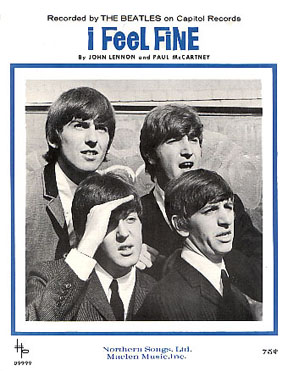 An interesting side-note concerning this session was that John could be heard practicing the beginnings of a new song he was writing called "I Feel Fine," which wasn't officially brought into the studio until a later recording session held on October 18th, 1964. While The Beatles felt that "Eight Days A Week" would undoubtedly be the next single, this would all change when they heard the final version of "I Feel Fine" a couple of weeks later. An interesting side-note concerning this session was that John could be heard practicing the beginnings of a new song he was writing called "I Feel Fine," which wasn't officially brought into the studio until a later recording session held on October 18th, 1964. While The Beatles felt that "Eight Days A Week" would undoubtedly be the next single, this would all change when they heard the final version of "I Feel Fine" a couple of weeks later.
 On October 18th, 1964, a marathon recording session was scheduled to knock out a bunch of songs for the soon-to-be-released album. "The first order of business," as explained by 2nd engineer Geoff Emerick in his book "Here, There And Everywhere," "was to do some repair work on...'Eight Days A Week.' As everyone settled in chairs and gathered around the console, I threaded up Norman (Smith)'s rough mix and the playback commenced...As we listened intently, everyone's head was nodding in time, Ringo exuberantly tapping out the beat on his knees. As the last note died out, we all excitedly agreed that the high-energy performance captured on tape was a definite "keeper." The only problems were with the ragged beginning and overly abrupt ending, and an intense discussion ensued about how to best fix them." On October 18th, 1964, a marathon recording session was scheduled to knock out a bunch of songs for the soon-to-be-released album. "The first order of business," as explained by 2nd engineer Geoff Emerick in his book "Here, There And Everywhere," "was to do some repair work on...'Eight Days A Week.' As everyone settled in chairs and gathered around the console, I threaded up Norman (Smith)'s rough mix and the playback commenced...As we listened intently, everyone's head was nodding in time, Ringo exuberantly tapping out the beat on his knees. As the last note died out, we all excitedly agreed that the high-energy performance captured on tape was a definite "keeper." The only problems were with the ragged beginning and overly abrupt ending, and an intense discussion ensued about how to best fix them."
 "Paul announced that he and John had come up with an idea for an alternate beginning," Geoff Emerick continues, "doing an a cappella (unaccompanied) vocal, and George Martin, who had learned by now never to dismiss any of their ideas out of hand, said, 'Fine, let's have a go.' With that, they trundled off down to the studio...Norman (Smith) had to spend some time matching sounds so that the edits would be undetectable...Paul, John and George Harrison gathered around a single (microphone) and began singing 'oohs' in unison ("take 14"). It was interesting, but was quickly deemed too weak of a beginning for a song that was so dynamic." "Paul announced that he and John had come up with an idea for an alternate beginning," Geoff Emerick continues, "doing an a cappella (unaccompanied) vocal, and George Martin, who had learned by now never to dismiss any of their ideas out of hand, said, 'Fine, let's have a go.' With that, they trundled off down to the studio...Norman (Smith) had to spend some time matching sounds so that the edits would be undetectable...Paul, John and George Harrison gathered around a single (microphone) and began singing 'oohs' in unison ("take 14"). It was interesting, but was quickly deemed too weak of a beginning for a song that was so dynamic."
 "Rather than waste more time," continues Geoff Emerick, "George Martin decided to move things along by having The Beatles work on the (conclusion) instead. The idea they had worked out for that part was much more powerful, with Lennon and Harrison stabbing out ringing chords on their guitars, accompanied by Paul tapping out a staccato bass line on his trusty Hofner ("take 15"). The problem of what to do about the ragged intro still remained, however, and as they were pondering what to do about it, Norman (Smith) came up with the brilliant suggestion of simply fading in the song, instead of having everything come crashing in at full volume." "Rather than waste more time," continues Geoff Emerick, "George Martin decided to move things along by having The Beatles work on the (conclusion) instead. The idea they had worked out for that part was much more powerful, with Lennon and Harrison stabbing out ringing chords on their guitars, accompanied by Paul tapping out a staccato bass line on his trusty Hofner ("take 15"). The problem of what to do about the ragged intro still remained, however, and as they were pondering what to do about it, Norman (Smith) came up with the brilliant suggestion of simply fading in the song, instead of having everything come crashing in at full volume."
 With the discussions about the song's introduction and conclusion, the matching of sounds by engineer Norman Smith, and the actual recording of the edit pieces, the entire first hour of this session (from 2:30 to 3:30 pm) was taken up with putting the finishing touches on "Eight Days A Week." The following eight hours resulted in seven more songs being completed, including what became their next British number one single "I Feel Fine." With the discussions about the song's introduction and conclusion, the matching of sounds by engineer Norman Smith, and the actual recording of the edit pieces, the entire first hour of this session (from 2:30 to 3:30 pm) was taken up with putting the finishing touches on "Eight Days A Week." The following eight hours resulted in seven more songs being completed, including what became their next British number one single "I Feel Fine."
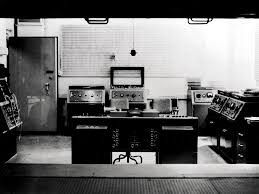 Both the mono and stereo mixes of the song were performed in the control room of EMI Studio Two on October 27th, 1964 by producer George Martin and engineers Norman Smith and Ken Scott. It was at these mixing sessions that the fade-in to the song, a first for any pop song, was performed. However, because the separately recorded conclusion needed to be added to the body of the song, two mixes needed to be made and edited together for both the mono and stereo mix. Both the mono and stereo mixes of the song were performed in the control room of EMI Studio Two on October 27th, 1964 by producer George Martin and engineers Norman Smith and Ken Scott. It was at these mixing sessions that the fade-in to the song, a first for any pop song, was performed. However, because the separately recorded conclusion needed to be added to the body of the song, two mixes needed to be made and edited together for both the mono and stereo mix.
 A new stereo mix of the song was created in 2015 by Giles Martin (son of George Martin) and Sam Okell in Abbey Road Studios for inclusion on a re-released version of the compilation album "Beatles 1." Then again in 2023, Giles Martin was given the task of creating a "demix remix" of "Eight Days A Week" for inclusion on the 50th Anniversary edition of the compilation album "The Beatles / 1962 - 1966" (aka "The Red Album"). With Peter Jackson's AI technology at his disposal, Giles Martin was able to utilize this "new machine-learning techology" so that "individual elements that were put to tape...and were therefore impossible to separate" could be "untangled, allowing Giles (Martin) to put the original recordings back together with even greater clarity and impact," as stated by John Harris in the liner notes of the above mentioned album. "The power of Ringo's drumming," Giles Martin explained to Rolling Stone magazine, "it's been unearthed. But the playing is just really good. That's joy." In the case of "Eight Days A Week," Ringo's drumming is the absolute highlight of this new mix. A new stereo mix of the song was created in 2015 by Giles Martin (son of George Martin) and Sam Okell in Abbey Road Studios for inclusion on a re-released version of the compilation album "Beatles 1." Then again in 2023, Giles Martin was given the task of creating a "demix remix" of "Eight Days A Week" for inclusion on the 50th Anniversary edition of the compilation album "The Beatles / 1962 - 1966" (aka "The Red Album"). With Peter Jackson's AI technology at his disposal, Giles Martin was able to utilize this "new machine-learning techology" so that "individual elements that were put to tape...and were therefore impossible to separate" could be "untangled, allowing Giles (Martin) to put the original recordings back together with even greater clarity and impact," as stated by John Harris in the liner notes of the above mentioned album. "The power of Ringo's drumming," Giles Martin explained to Rolling Stone magazine, "it's been unearthed. But the playing is just really good. That's joy." In the case of "Eight Days A Week," Ringo's drumming is the absolute highlight of this new mix.
Song Structure and Style
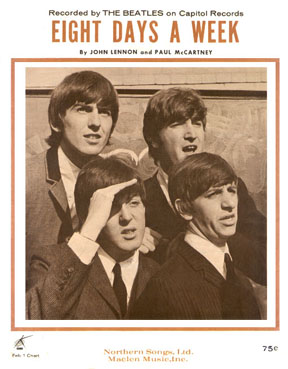 Lennon and McCartney return once again to their usual 'verse/ verse/ bridge/ verse' formula, this actually being a simple but classic case. No need for an instrumental or solo section, just a quick introduction and almost identical conclusion with a repeat of a bridge and verse thrown in the middle. This results in an aababa format, which has been seen many times thus far in their cannon. Lennon and McCartney return once again to their usual 'verse/ verse/ bridge/ verse' formula, this actually being a simple but classic case. No need for an instrumental or solo section, just a quick introduction and almost identical conclusion with a repeat of a bridge and verse thrown in the middle. This results in an aababa format, which has been seen many times thus far in their cannon.
The interesting facets to listen to are in the arrangement, which was very pre-determined and concise. The four measure introduction, for instance, comprises the same chords heard in the first four measures of each verse, but played quite differently. Apart from its being faded in (at the suggestion of engineer Norman Smith) to build momentum, Paul's bass notes propel these measures with fast triplets that stay permanently locked on the D note even though the chords are changing. George's vivid guitar phrases (which may very well have been double-tracked) are the primary focus here, while the drums stay subdued on the toms. This creates an irresistible anticipation, as well as a perfect vehicle for disc jockeys to cross-fade from the previous song.
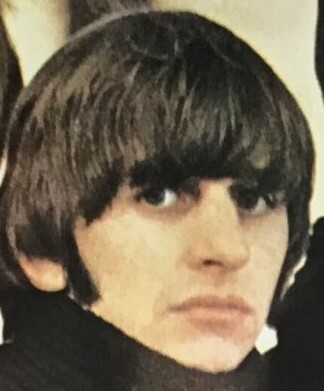 Ringo's drums kick in on the one-beat of the first sixteen-measure-verse along with Lennon's lead vocals, which are double-tracked throughout the whole song. Handclaps are heard strategically on the two- and four-beat of each measure throughout the first eight measures, as are George's swing-style rhythm guitar phrases (which you hear him rehearsing in between earlier takes on "Anthology 1"). John's acoustic rhythm guitar work is actually the dominant instrument in the mix, while Ringo's drums are slightly quieter than heard in the earlier takes on the Anthology disc. Paul is heard playfully walking his bass on the quarter notes of each measure. Ringo's drums kick in on the one-beat of the first sixteen-measure-verse along with Lennon's lead vocals, which are double-tracked throughout the whole song. Handclaps are heard strategically on the two- and four-beat of each measure throughout the first eight measures, as are George's swing-style rhythm guitar phrases (which you hear him rehearsing in between earlier takes on "Anthology 1"). John's acoustic rhythm guitar work is actually the dominant instrument in the mix, while Ringo's drums are slightly quieter than heard in the earlier takes on the Anthology disc. Paul is heard playfully walking his bass on the quarter notes of each measure.
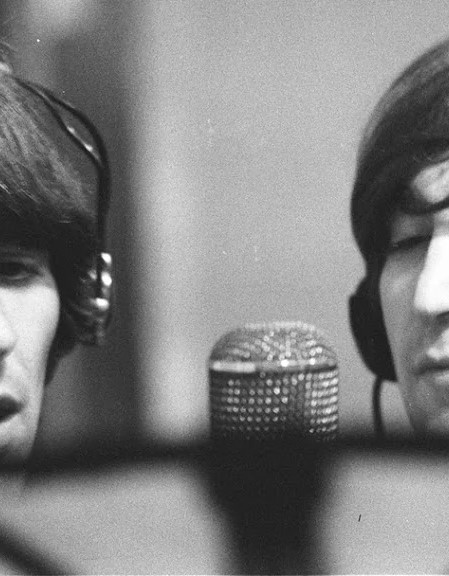 The third section of the verse, which would be measures nine through twelve, shows George reduced to guitar strums on the one-beat of each measure and the virtual disappearance of Ringo. Instead we hear John's guitar propelling the song along with the characteristic handclaps adding a beat at the end of each measure while the words "hold me, love me" are repeated twice. Afterwards, the last four measures of the verse go back to the instrumentation heard earlier in the verse while Paul kicks into harmony for the first time on the key phrase of the song "eight days a week." Wisely, they decided to abandon the awkward slip into falsetto on this phrase that they experimented with in take five. The third section of the verse, which would be measures nine through twelve, shows George reduced to guitar strums on the one-beat of each measure and the virtual disappearance of Ringo. Instead we hear John's guitar propelling the song along with the characteristic handclaps adding a beat at the end of each measure while the words "hold me, love me" are repeated twice. Afterwards, the last four measures of the verse go back to the instrumentation heard earlier in the verse while Paul kicks into harmony for the first time on the key phrase of the song "eight days a week." Wisely, they decided to abandon the awkward slip into falsetto on this phrase that they experimented with in take five.
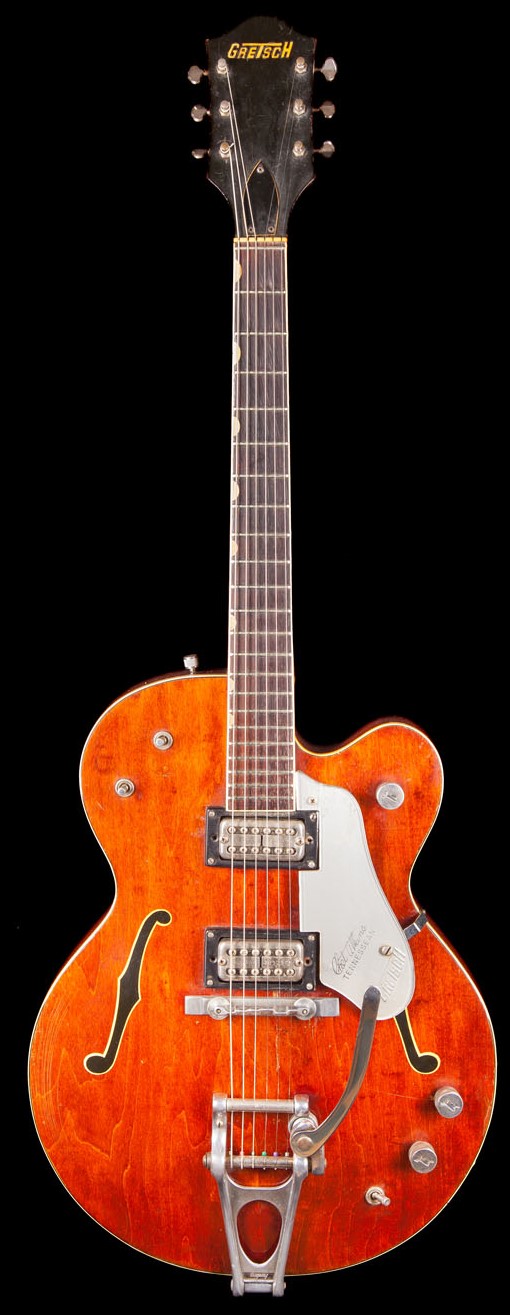 Another identical verse follows, the only differences being another set of lyrics in the first eight measures and Paul slipping into harmony for the "hold me, love me" section of the verse. The bridge then follows, which is eight measures long and is full of intricacies all its own. For instance, Paul harmonizes with John throughout the whole bridge, which is especially prominent during the third and fourth measures where the band fully drops out (except for Paul's bass) and you hear their rising-and-falling harmonies sing "I lo-o-o-o-ove you." This is followed by a drum accent by Ringo which calls the band back into the song on the fifth measure. It's noteworthy to mention that George is almost non-existent in this first bridge as if he hadn't gotten this part quite figured out yet. He enters in strongly with the next verse, though. Another identical verse follows, the only differences being another set of lyrics in the first eight measures and Paul slipping into harmony for the "hold me, love me" section of the verse. The bridge then follows, which is eight measures long and is full of intricacies all its own. For instance, Paul harmonizes with John throughout the whole bridge, which is especially prominent during the third and fourth measures where the band fully drops out (except for Paul's bass) and you hear their rising-and-falling harmonies sing "I lo-o-o-o-ove you." This is followed by a drum accent by Ringo which calls the band back into the song on the fifth measure. It's noteworthy to mention that George is almost non-existent in this first bridge as if he hadn't gotten this part quite figured out yet. He enters in strongly with the next verse, though.
The first verse is then repeated in exactly the same formation as we heard it before with one notable exception. John lets out a moaning introduction to the phrase "hold me" in the eighth measure, which is the only time this is done in the whole song.
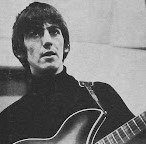 The bridge is then repeated, but it appears George is more confident in his playing this time around because his rhythm guitar phrases can be heard very prominently. The second verse is then repeated identically as heard the first time, complete with harmonies during the "hold me, love me" section. The last two measures of this verse are then repeated three times to drill the title of the song into our subconscious minds for the rest of our lives. This is then followed by the conclusion of the song that was recorded nearly two weeks later and edited on at the mixing stage. It is a virtual repeat of the introduction (without the fade in), with a crash landing on the one-beat of the fourth measure. This ending inspires a satisfied feeling and encourages applause, which is what the perfect pop song is supposed to do! The bridge is then repeated, but it appears George is more confident in his playing this time around because his rhythm guitar phrases can be heard very prominently. The second verse is then repeated identically as heard the first time, complete with harmonies during the "hold me, love me" section. The last two measures of this verse are then repeated three times to drill the title of the song into our subconscious minds for the rest of our lives. This is then followed by the conclusion of the song that was recorded nearly two weeks later and edited on at the mixing stage. It is a virtual repeat of the introduction (without the fade in), with a crash landing on the one-beat of the fourth measure. This ending inspires a satisfied feeling and encourages applause, which is what the perfect pop song is supposed to do!
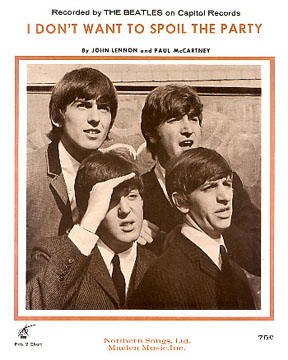 Lyrically, the song is very "surfacy." It's obvious that the catch phrase "eight days a week" is the primary focus with all of the cliché-heavy surrounding lyrics being used as filler to point to the end of each verse, which highlights the song's title. Lyrics such as "ooh, I need your love babe," "always on my mind" and "love you all the time" are a far cry from the more introspective and personal songs that Lennon was writing at that time, such as "I'm A Loser" and "I Don't Want To Spoil The Party." This, no doubt, was a contributing factor to John's opinion of the song throughout the years, viewing it as "lousy" and "manufactured." Lyrically, the song is very "surfacy." It's obvious that the catch phrase "eight days a week" is the primary focus with all of the cliché-heavy surrounding lyrics being used as filler to point to the end of each verse, which highlights the song's title. Lyrics such as "ooh, I need your love babe," "always on my mind" and "love you all the time" are a far cry from the more introspective and personal songs that Lennon was writing at that time, such as "I'm A Loser" and "I Don't Want To Spoil The Party." This, no doubt, was a contributing factor to John's opinion of the song throughout the years, viewing it as "lousy" and "manufactured."
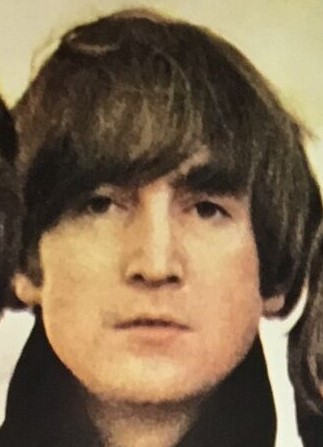 Musicianship and arrangement are what is key to this song, giving it its undeniable commercial appeal. While the writing may be slightly in favor of McCartney over Lennon, John appears as the central figure with his lead vocals and acoustic guitar. Even though George plays his passages with electric guitar, it is by no means a "lead guitar" part. The overall emphasis of John's rhythm guitar identifies the song as acoustic-based, with George's electric guitar playing a supporting role, which is quite opposite of what we're used to in Beatles recordings up to this point. George's harmony vocals, which appear during the bridge as well as when the title of the song is sung, gel very well with the others to perfect their three-part harmony. Musicianship and arrangement are what is key to this song, giving it its undeniable commercial appeal. While the writing may be slightly in favor of McCartney over Lennon, John appears as the central figure with his lead vocals and acoustic guitar. Even though George plays his passages with electric guitar, it is by no means a "lead guitar" part. The overall emphasis of John's rhythm guitar identifies the song as acoustic-based, with George's electric guitar playing a supporting role, which is quite opposite of what we're used to in Beatles recordings up to this point. George's harmony vocals, which appear during the bridge as well as when the title of the song is sung, gel very well with the others to perfect their three-part harmony.
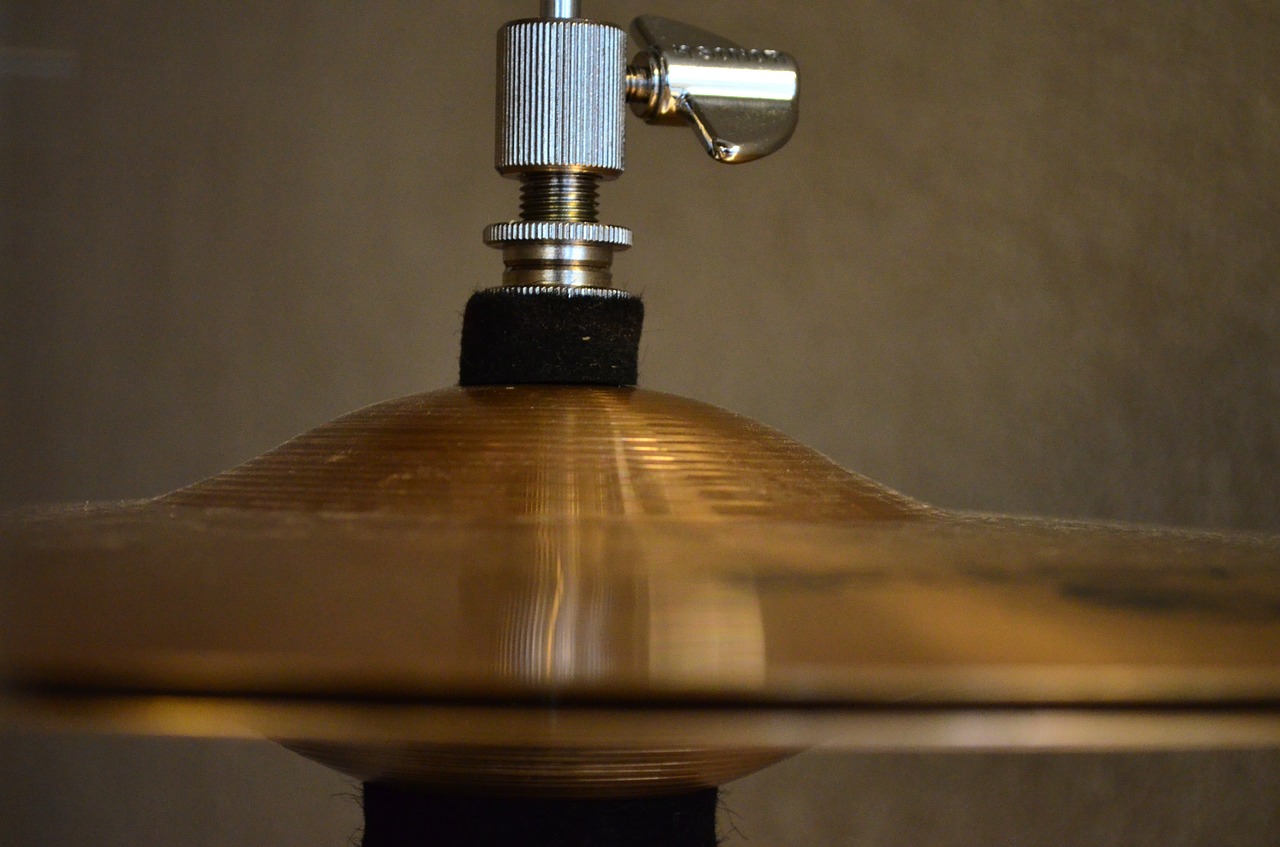 As usual, Paul plays and sings to perfection, his harmonies adding the irresistible charm and professionalism to the proceedings. His walking bass, while slightly low in the mix, shows Paul filling his reluctant role as "bass player" of the group with enthusiasm and pride. Ringo's strident drum fills are heard more prominently in the earlier takes (as heard in "Anthology 1") but can still be detected in the finished product. His trademark hi-hat sizzle is in the forefront as usual, as is his incredible attention to the detailed arrangement (that is, knowing when to stop, start, accent, and crash). As usual, Paul plays and sings to perfection, his harmonies adding the irresistible charm and professionalism to the proceedings. His walking bass, while slightly low in the mix, shows Paul filling his reluctant role as "bass player" of the group with enthusiasm and pride. Ringo's strident drum fills are heard more prominently in the earlier takes (as heard in "Anthology 1") but can still be detected in the finished product. His trademark hi-hat sizzle is in the forefront as usual, as is his incredible attention to the detailed arrangement (that is, knowing when to stop, start, accent, and crash).
American Releases
 Capitol Records' timing couldn't have been any better. The week that The Beatles' most recent #1 single "I Feel Fine" fell off of the Billboard Hot 100, they released their pre-planned follow-up single "Eight Days A Week." The release date for this new single, which also raced up to the #1 spot for two weeks, was February 15th, 1965. And, while "Eight Days A Week" was enjoying its last week on the Billboard Hot 100, their next single "Ticket To Ride" was released, which also made it to #1. Thanks to Capitol, America was enjoying new Beatles music non-stop. Capitol Records' timing couldn't have been any better. The week that The Beatles' most recent #1 single "I Feel Fine" fell off of the Billboard Hot 100, they released their pre-planned follow-up single "Eight Days A Week." The release date for this new single, which also raced up to the #1 spot for two weeks, was February 15th, 1965. And, while "Eight Days A Week" was enjoying its last week on the Billboard Hot 100, their next single "Ticket To Ride" was released, which also made it to #1. Thanks to Capitol, America was enjoying new Beatles music non-stop.
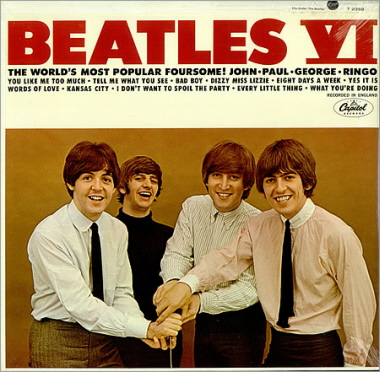 It didn't take long for Capitol to include "Eight Days A Week" on an album either. June 14th, 1965 saw the album "Beatles VI" released, which prominently placed the song as the second track on side one. Six weeks at #1 on the Billboard albums chart showed that US audiences were still eager for more new Beatles music. "Beatles VI" was then released on compact disc on January 21st, 2014, both the mono and stereo versions of the album contained on one CD. It didn't take long for Capitol to include "Eight Days A Week" on an album either. June 14th, 1965 saw the album "Beatles VI" released, which prominently placed the song as the second track on side one. Six weeks at #1 on the Billboard albums chart showed that US audiences were still eager for more new Beatles music. "Beatles VI" was then released on compact disc on January 21st, 2014, both the mono and stereo versions of the album contained on one CD.
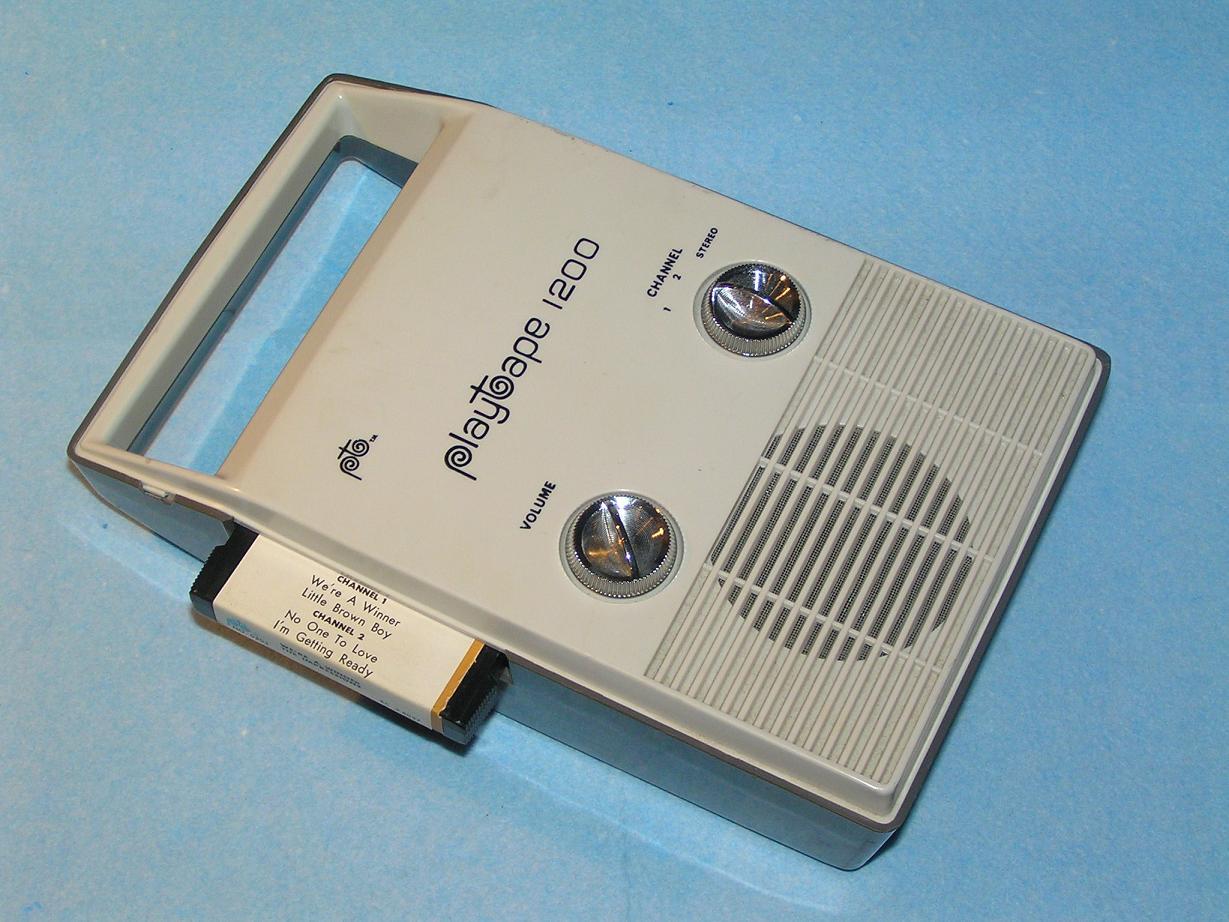 Sometime in 1967, Capitol released Beatles music on a brand new but short-lived format called "Playtapes." These tape cartridges did not have the capability to include entire albums, so two seperate truncated four-song versions of "Beatles VI" were released in this portable format, "Eight Days A Week" being on one of them. These "Playtapes" are highly collectable today. Sometime in 1967, Capitol released Beatles music on a brand new but short-lived format called "Playtapes." These tape cartridges did not have the capability to include entire albums, so two seperate truncated four-song versions of "Beatles VI" were released in this portable format, "Eight Days A Week" being on one of them. These "Playtapes" are highly collectable today.
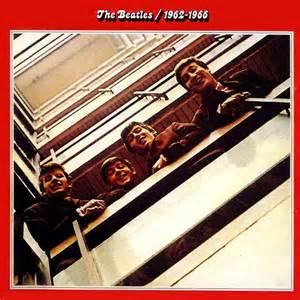 On April 2nd, 1973, the first official "greatest hits" compilation package was released in America. "The Beatles / 1962-1966" (aka "The Red Album") featured "Eight Days A Week" as a prominent album track as far as Britain was concerned, but US audiences expected this #1 single to definitely be included, as it rightfully was. This double-album zoomed up the Billboard album chart but only peaked at #3. It couldn't get past its companion album "The Beatles/1967-1970" (aka "The Blue Album") which was at number one at the time. The “Red” album was issued on compact disc in 1993 with the first stereo mix of “Eight Days A Week” available on CD. The set was then remastered and re-released on October 19th, 2010. On April 2nd, 1973, the first official "greatest hits" compilation package was released in America. "The Beatles / 1962-1966" (aka "The Red Album") featured "Eight Days A Week" as a prominent album track as far as Britain was concerned, but US audiences expected this #1 single to definitely be included, as it rightfully was. This double-album zoomed up the Billboard album chart but only peaked at #3. It couldn't get past its companion album "The Beatles/1967-1970" (aka "The Blue Album") which was at number one at the time. The “Red” album was issued on compact disc in 1993 with the first stereo mix of “Eight Days A Week” available on CD. The set was then remastered and re-released on October 19th, 2010.
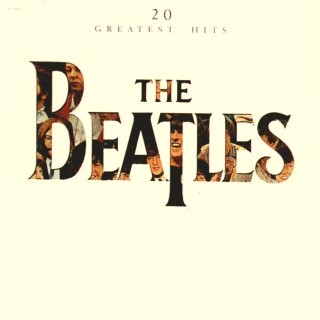 October 11th, 1982 saw the release of a very compact compilation album entitled "20 Greatest Hits." While the British edition of this single-album did not contain "Eight Days A Week" (since it wasn't released as a single in that country), the US version did. The album peaked at a respectable #50 on the Billboard album chart. October 11th, 1982 saw the release of a very compact compilation album entitled "20 Greatest Hits." While the British edition of this single-album did not contain "Eight Days A Week" (since it wasn't released as a single in that country), the US version did. The album peaked at a respectable #50 on the Billboard album chart.
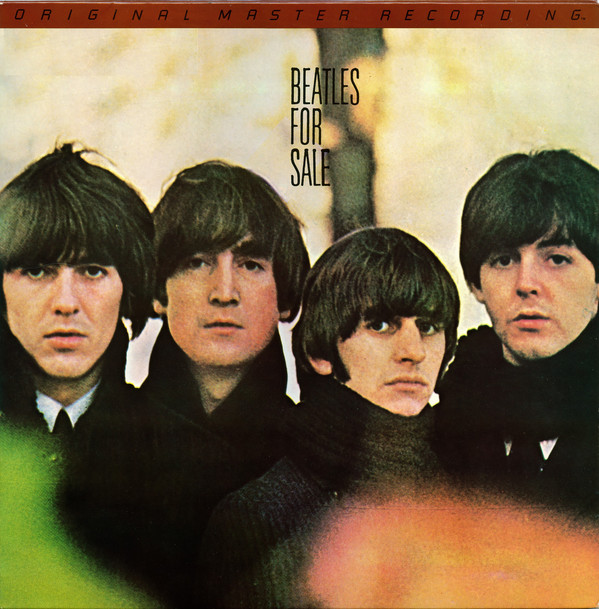 The first time the original British "Beatles For Sale" album was made available in the US was the "Original Master Recording" vinyl edition released through Mobile Fidelity Sound Lab in February of 1987. This album included "Eight Days A Week" and was prepared utilizing half-speed mastering technology from the original master tape on loan from EMI. This version of the album was only available for a short time and is quite collectible today. The first time the original British "Beatles For Sale" album was made available in the US was the "Original Master Recording" vinyl edition released through Mobile Fidelity Sound Lab in February of 1987. This album included "Eight Days A Week" and was prepared utilizing half-speed mastering technology from the original master tape on loan from EMI. This version of the album was only available for a short time and is quite collectible today.
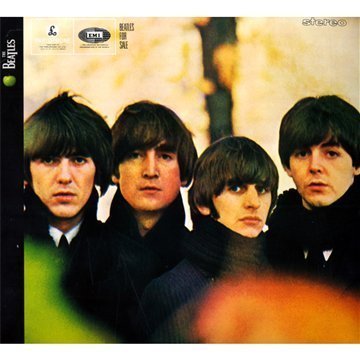 On February 26th, 1987, the "Beatles For Sale" album, featuring "Eight Days A Week," was released in the US on compact disc, the vinyl edtion coming out on July 21st, 1987. While these releases were in mono only at the time, the remastered stereo CD was released on September 9th, 2009, the remastered stereo vinyl edition coming out on November 13th, 2012. On February 26th, 1987, the "Beatles For Sale" album, featuring "Eight Days A Week," was released in the US on compact disc, the vinyl edtion coming out on July 21st, 1987. While these releases were in mono only at the time, the remastered stereo CD was released on September 9th, 2009, the remastered stereo vinyl edition coming out on November 13th, 2012.
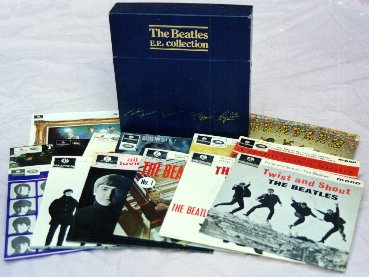 Another mono release in the US was on June 30th, 1992. The box set "Compact Disc EP Collection" came out on this date, "Eight Days A Week" being included therein because of it appearing on the EP entitled "Beatles For Sale," which was originally released on vinyl in Britain on April 6th, 1965. Another mono release in the US was on June 30th, 1992. The box set "Compact Disc EP Collection" came out on this date, "Eight Days A Week" being included therein because of it appearing on the EP entitled "Beatles For Sale," which was originally released on vinyl in Britain on April 6th, 1965.
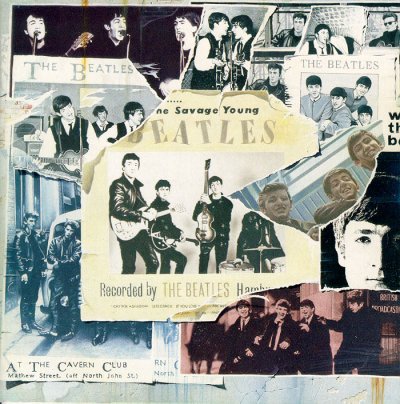 The long awaited "Anthology 1" album was released on November 21st, 1995. Two tracks on this two-CD set feature "Eight Days A Week," the first cut bearing the subtitle "(False Starts)," which cross-fades "take three" and "take four" of the original October 6th, 1964 recording session, while the next cut features the entire "take five," complete with studio banter and George practicing his rhythm guitar passages. The long awaited "Anthology 1" album was released on November 21st, 1995. Two tracks on this two-CD set feature "Eight Days A Week," the first cut bearing the subtitle "(False Starts)," which cross-fades "take three" and "take four" of the original October 6th, 1964 recording session, while the next cut features the entire "take five," complete with studio banter and George practicing his rhythm guitar passages.
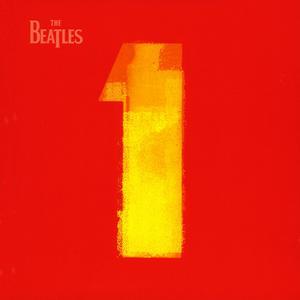 On November 14th, 2000, the ultimate "greatest hits" package was released, which was simply entitled "Beatles 1." Since "Eight Days A Week" did reach the #1 spot in the US, it earned its right to be included on this 27 track single disc. 31 million copies later as of 2017 (worldwide), this album has become the most successful Beatles album to date. A remastered version of this album was released in September of 2011 and a newly mixed version was released on November 6th, 2015. On November 14th, 2000, the ultimate "greatest hits" package was released, which was simply entitled "Beatles 1." Since "Eight Days A Week" did reach the #1 spot in the US, it earned its right to be included on this 27 track single disc. 31 million copies later as of 2017 (worldwide), this album has become the most successful Beatles album to date. A remastered version of this album was released in September of 2011 and a newly mixed version was released on November 6th, 2015.
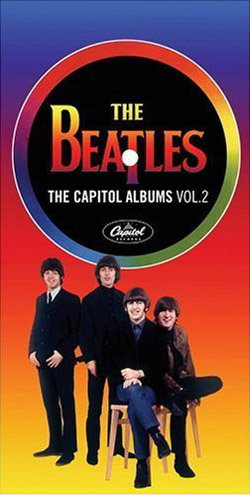 Capitol prepared its second CD box set "The Capitol Albums, Vol. 2" for release on April 11th, 2006. The entire "Beatles VI" album, both stereo and mono versions as originally released in 1965, was contained in this set. "Eight Days A Week" is one of only four #1 singles that are contained therein. For initial pressings of this set, Capitol mistakenly presented a "mono type-B" fold-down mono mix for the entire "Beatles VI" album, which was a method that combined both the left and right channels of the stereo mix to create a mono mix. Therefore, the mono mix of "Eight Days A Week" in this set was initially prepared in this way, the error being corrected on subsequent pressings. Capitol prepared its second CD box set "The Capitol Albums, Vol. 2" for release on April 11th, 2006. The entire "Beatles VI" album, both stereo and mono versions as originally released in 1965, was contained in this set. "Eight Days A Week" is one of only four #1 singles that are contained therein. For initial pressings of this set, Capitol mistakenly presented a "mono type-B" fold-down mono mix for the entire "Beatles VI" album, which was a method that combined both the left and right channels of the stereo mix to create a mono mix. Therefore, the mono mix of "Eight Days A Week" in this set was initially prepared in this way, the error being corrected on subsequent pressings.
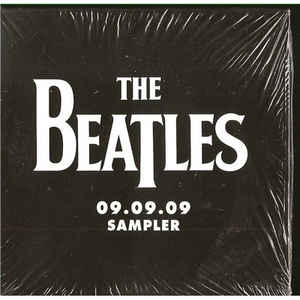 On September 9th, 2009, the compact disc box set "The Beatles In Mono" was released, which features the mono mix of the song in a vibrant remastered state. Also released on September 9th, 2009, in promotion of the remastered Beatles catalog, the "09.09.09 Sampler" was distributed to radio programmers and retailers, "Eight Days A Week" being featured therein. The vinyl edition of the box set was first released on September 9th, 2014. On September 9th, 2009, the compact disc box set "The Beatles In Mono" was released, which features the mono mix of the song in a vibrant remastered state. Also released on September 9th, 2009, in promotion of the remastered Beatles catalog, the "09.09.09 Sampler" was distributed to radio programmers and retailers, "Eight Days A Week" being featured therein. The vinyl edition of the box set was first released on September 9th, 2014.
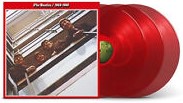 A 50th Anniversay edition of the compilation album "The Beatles / 1962 - 1966" (aka "The Red Album") was released on November 10th, 2023, the new stereo mix of "Eight Days A Week" detailed above being included. This newly expanded release included 12 additional songs for a total of 38 tracks, and was made available as a double CD and as a triple vinyl release on both black and red vinyl. A 50th Anniversay edition of the compilation album "The Beatles / 1962 - 1966" (aka "The Red Album") was released on November 10th, 2023, the new stereo mix of "Eight Days A Week" detailed above being included. This newly expanded release included 12 additional songs for a total of 38 tracks, and was made available as a double CD and as a triple vinyl release on both black and red vinyl.
Live Performances
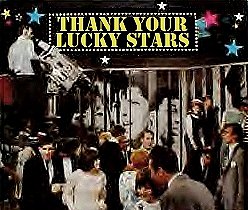 Despite the popularity of the song in both Britain and America, The Beatles chose to omit it from any live performances during their career. The only promotion they did that included "Eight Days A Week" was a lip-synced performance on their final appearance on the weekly British television show "Thank Your Lucky Stars," which was taped on March 28th and broadcast on April 3rd, 1965. This segment was filmed before a live audience at Alpha Studios in Birmingham, the same place that they began their British television career in January of 1963 on the same television show. Despite the popularity of the song in both Britain and America, The Beatles chose to omit it from any live performances during their career. The only promotion they did that included "Eight Days A Week" was a lip-synced performance on their final appearance on the weekly British television show "Thank Your Lucky Stars," which was taped on March 28th and broadcast on April 3rd, 1965. This segment was filmed before a live audience at Alpha Studios in Birmingham, the same place that they began their British television career in January of 1963 on the same television show.
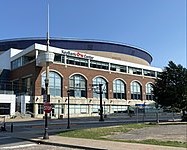 Interestingly, Paul decided to include "Eight Days A Week" periodically as the opening song of his 2013 "Out There!" tour, which spanned from May 4th, 2013 (Belo Horizonte, Brazil) to October 22nd, 2015 (at the First Niagara Center in Buffalo, New York). Paul walked out with his trusty Hofner violin-shaped bass and performed the song live for the first time in his life. Interestingly, Paul decided to include "Eight Days A Week" periodically as the opening song of his 2013 "Out There!" tour, which spanned from May 4th, 2013 (Belo Horizonte, Brazil) to October 22nd, 2015 (at the First Niagara Center in Buffalo, New York). Paul walked out with his trusty Hofner violin-shaped bass and performed the song live for the first time in his life.
Conclusion
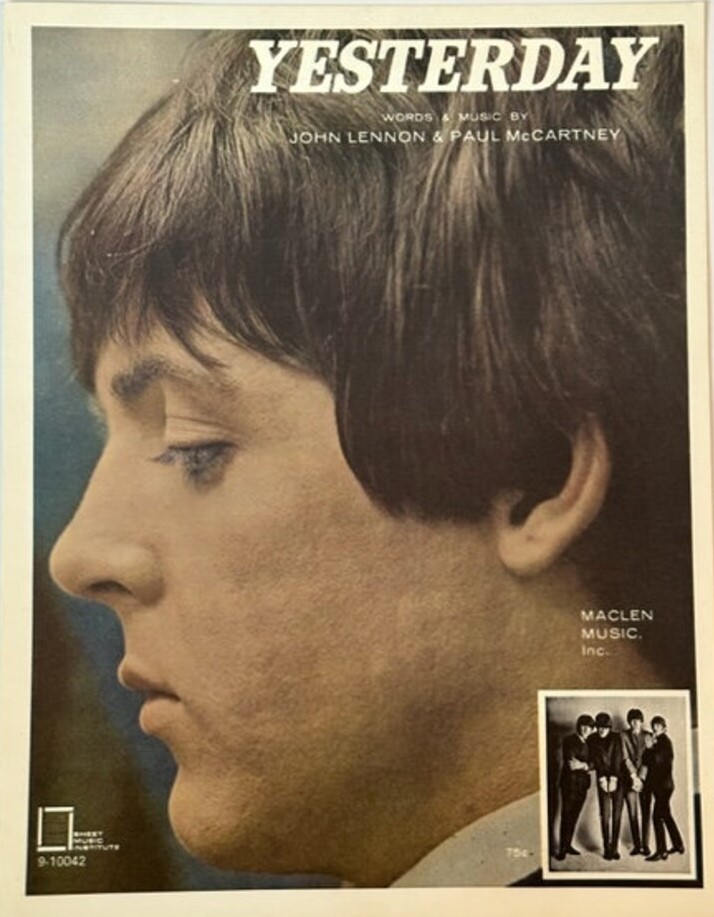 The success of "Eight Days A Week" on the American charts taught Capitol Records a valuable (that is, profitable) lesson. The lesson was: Whenever EMI sends a new Beatles album to be released in the US, choose one song that stands out as a potential hit record, and another one to use as a b-side, and don't include these on the next American album. Then, a couple of months later, release these as a "new" Beatles single and it will sell a million copies. The success of "Eight Days A Week" on the American charts taught Capitol Records a valuable (that is, profitable) lesson. The lesson was: Whenever EMI sends a new Beatles album to be released in the US, choose one song that stands out as a potential hit record, and another one to use as a b-side, and don't include these on the next American album. Then, a couple of months later, release these as a "new" Beatles single and it will sell a million copies.
Capitol followed this pattern for the next two British albums. When EMI sent over the album "Help!," they purposely didn't include the songs "Yesterday" and "Act Naturally," which they released shortly thereafter to become a million selling single. Then, when EMI sent over the album "Rubber Soul," Capitol set aside "Nowhere Man" and "What Goes On" for release as a future single, which also became a million-seller. So, while Capitol raked in more profits, American Beatles fans were treated to a constant flow of new material. Talk about a win/win!
Song Summary
"Eight Days A Week"
Written by: John Lennon / Paul McCartney
Instrumentation (most likely):
- John Lennon - Lead Vocals, Rhythm Guitar (1964 Gibson J-160E), handclaps
- Paul McCartney - Bass Guitar (1963 Hofner 500/1), Harmony Vocals, handclaps
- George Harrison - Lead Guitar (1963 Gretsch 6119 Tennessean, 1963 Rickenbacker 360-12), Harmony Vocals, handclaps
- Ringo Starr - Drums (1964 Ludwig Super Classic Black Oyster Pearl), handclaps
Written and compiled by Dave Rybaczewski
|
IF YOU WOULD LIKE TO MAKE A DONATION TO KEEP THIS WEBSITE UP AND RUNNING, PLEASE CLICK BELOW!
|